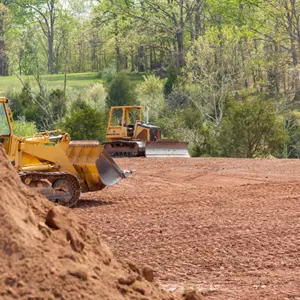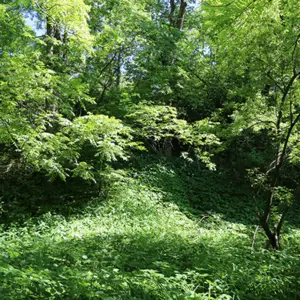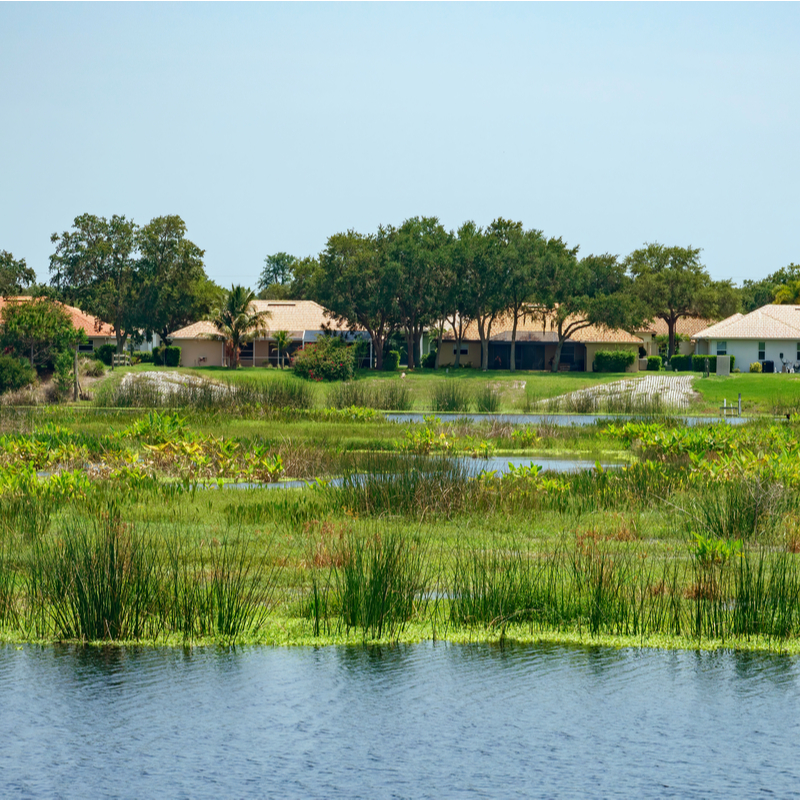When it comes to insect control, there are several features of Charlotte-area yards that are highly attractive to pests. You may have one of these “hot spots” in your own backyard. Today, we’ll discuss some of these common problem areas and what makes them so desirable for many undesirable bugs.
Insect Control And Problem Areas
The Land Grade

Sometimes, our backyards have the earth graded to make room for hardscaping like driveways, patios, decks, paths, stairs, etc. Grading can also be used to gently slope any rainfall away from your home and garage to help stop the land from eroding. Unfortunately, one of the downsides to this practice is pooling water in the lowest parts of the property. When your lawn becomes waterlogged, it can not only damage your lawn and plants, crack your foundation, and create mold issues, but it can also create a haven for everyone’s least favorite pest: mosquitoes. That’s because female mosquitoes need standing water to lay their eggs. Baby mosquitoes begin their life in the water, much like tadpoles. And all that standing rainwater is perfect for them, which leads to the next problem.
Drainage Issues
Even if your yard doesn’t have a slope, you could still experience drainage issues. This could be due to various underlying issues like the following:
- Compacted soil. When soil is compacted, it means it’s too hard and compressed to allow water to flow through into the subterranean water table.
- Thatch. When grass clippings, leaves, and other organic debris break down in our lawns, it creates thatch. Some thatch in your lawn is normal, but if the thatch is too thick, it will prevent water from draining like compacted soil.
- Soil composition. In the Charlotte area, the predominant material in our soil is clay. While clay is full of nutrients and helps with moisture retention, it can be too much of a good thing. Clay comprises very tiny particles that stick together, making it difficult for water to pass through.
We can aerate your yard to break up thatch and compacted soil and allow for better drainage. However, if you experience persistent drainage issues, even after aerating, you may want to consider having a professionally installed underground drainage system so that the water will move out of your yard faster.
Wooded Areas

If your home is next to woodlands, it will likely have greater than normal numbers of pests because it’s near the source. This is particularly true of fleas and ticks. While both are bloodsucking insects, they each have their own favorite method of finding a host. Fleas will jump onto victims as they pass by the woods. Ticks are far less agile and will cling to the ends of plants and branches and wait for an unlucky passerby to grab onto them. Fire ants also make use of wooded areas, as they will nest inside trees. This gives them an advantage because there is little to no disturbance of the soil surrounding the tree. And it provides them with food sources and water. So if your yard is close to a forested area, you may see fire ants colonizing the border. In addition to having a professional pest control application from Pine Valley Turf, we would also recommend you not have hardscaping features like patios, gazebos, playhouses, decks, sheds, etc., at the edge of your property nearest the woods. Now, we’re not suggesting you remove those things if they are already constructed. However, if you can, building a hardscape feature closer to the middle of your yard, or moving your child’s playscape to the middle of the yard, can help discourage pests from using these structures for shelter.
Wetlands
For much the same reasons as woodlands are problem areas, wetlands are as well. All that standing water is prime real estate for mosquitoes, fleas, ticks, and other unsavory bugs.
High Grass
This could mean grass left to grow taller than it ought to be or ornamental tall grasses in your landscaping beds. The biggest threat here is fleas and ticks. As we already touched on, fleas and ticks use woodland areas and tall grass to hop a ride onto unsuspecting victims. Tallgrass is one of their favorite hiding places. This environment provides them with shade during the heat of the day and shields them from birds. Make sure to mow the grass before it grows longer than three inches. If your lawn is a warm-season variety, you can mow it even shorter. Checking your mower height is an excellent way to include pest control in your regular lawn maintenance.
Get Surface Insect Control From Pine Valley Turf
If your yard has problem areas that are attractive to bugs, give the experts at Pine Valley Turf a call. Since 2005, we’ve been protecting yards in the Charlotte area with our insect control program. We can easily add this to your regular lawn care services or as a stand-alone service. To learn more or schedule an appointment, give us a call at (704) 831-8917 or leave us a message online. And don’t forget to check out our blog page, Facebook, and Instagram for more tips on yard cards and pest control!



